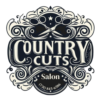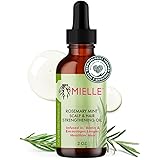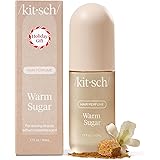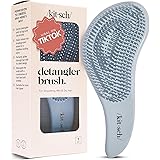Introduction to Nail Fungus
Nail fungus, medically known as onychomycosis, is a common condition affecting millions of individuals worldwide. This fungal infection typically occurs on the fingernails or toenails, leading to a range of symptoms that can include discoloration, thickening, and brittleness of the affected nails. In many cases, the fungus can also penetrate the nail bed, resulting in discomfort and unsightly appearances that may impact a person’s self-esteem and overall quality of life.
Fungi that cause nail infection thrive in warm, moist environments, making certain conditions favorable for their growth. Common sources of fungal infections include walking barefoot in public areas such as swimming pools or gyms, wearing tight or non-breathable footwear, and maintaining poor foot hygiene. Additionally, individuals with weakened immune systems, diabetes, or circulation problems are at a higher risk of developing nail fungus. Understanding these factors is vital in preventing the occurrence of this condition.
There are several types of nail fungus, with the most prevalent being dermatophytes, yeasts, and molds. Dermatophytes are responsible for the majority of nail fungal infections and prefer keratin, a protein found in nails. Yeasts, often associated with Candida species, typically affect toenails and can be indicative of underlying health issues if persistent. Molds, while less common, can still infect nails and are prevalent in specific environments. Recognizing the type of fungus is essential for an effective treatment plan, as different species may require distinct approaches for eradication.
Overall, nail fungus is not merely a cosmetic issue; it can lead to more severe health concerns if left untreated. Understanding its causes and prevalence can aid in early identification and promote effective prevention strategies.
Signs and Symptoms of Nail Fungus
Nail fungus, also known as onychomycosis, is a common condition that can affect individuals of all ages. Recognizing the signs and symptoms of nail fungus is crucial for early diagnosis and effective treatment. One of the most noticeable indicators is nail discoloration. Affected nails may appear yellow, brown, or even white, and the change in color can be particularly distressing for many individuals. As the infection progresses, discoloration may become more pronounced.
Another prominent symptom of nail fungus is nail thickening. Infected nails can become unusually thick, making them more challenging to trim and maintain. This thickening occurs as the fungus invades the nail bed, causing the keratin to behave abnormally. Additionally, nail brittleness is a common feature, leading to nails that are prone to breakage and splitting. These physical changes can significantly impact an individual’s aesthetic appearance and personal confidence.
Discomfort and pain may also accompany nail fungus, particularly in more severe cases. As the fungus spreads, pressure can build under the nail, resulting in a painful condition known as subungual keratosis. Individuals may experience sensations of pain while wearing shoes or during physical activities, which can hinder their daily lives. Furthermore, there may be an accompanying foul odor emanating from the affected nail, adding to the discomfort experienced.
The symptoms of nail fungus can vary among individuals, and early intervention is essential to prevent further complications. If you notice any of these signs, it is advisable to seek professional medical advice promptly to determine the best course of treatment.
Risk Factors for Nail Fungus
Nail fungus, also known as onychomycosis, affects individuals of various ages and backgrounds. However, certain risk factors can heighten susceptibility to this common condition. Understanding these factors is essential for effective prevention and management.
Age is one of the primary risk factors for developing nail fungus. As individuals age, their nails may become more brittle and easier for fungi to invade. The circulatory system also tends to weaken with age, further decreasing the body’s ability to fight off infections. This physiological slowdown makes older adults particularly vulnerable to fungal infections.
Pre-existing health conditions significantly contribute to an individual’s risk of developing nail fungus. People with diabetes, for instance, have compromised immune systems, making them more prone to infections. Additionally, those with weakened immune responses due to conditions like HIV/AIDS or cancer treatments also face increased risks. Furthermore, circulatory issues, such as peripheral artery disease, can affect nail health and enhance susceptibility to fungal infections.
Lifestyle choices also play a crucial role in the development of nail fungus. Frequent exposure to moisture through activities such as swimming or prolonged use of damp footwear creates an ideal environment for fungus to thrive. Occupational hazards, such as working in damp or humid environments, can similarly contribute to increased risks. Poor personal hygiene practices, including neglecting to dry feet properly after bathing, can further facilitate fungal infections.
Environmental factors are another important consideration. Nail fungus thrives in warm, moist areas, making public swimming pools, locker rooms, and shared showers hot spots for transmission. Being aware of these environments can help individuals take precautionary measures to protect themselves against nail fungus. By recognizing these risk factors, individuals can adopt preventive practices that can minimize the likelihood of contracting nail fungus.
Common Treatments for Nail Fungus
Nail fungus, medically known as onychomycosis, can be persistently uncomfortable and challenging to treat. However, several treatment options are available, each with its advantages and disadvantages. The choice of treatment often depends on the severity of the infection, patient preferences, and underlying health conditions.
Topical antifungal treatments are commonly used for mild to moderate nail fungus. These treatments are applied directly to the affected nail and surrounding skin. Popular options include ciclopirox nail lacquer and efinaconazole solution. While these topical solutions are relatively easy to apply and have minimal side effects, their effectiveness may be limited, especially in cases of severe infection, as they must penetrate the nail to reach the fungus.
For more severe cases, healthcare professionals may prescribe oral antifungal medications. Drugs such as terbinafine and itraconazole are typically more effective than topical treatments as they target the infection systemically. However, these oral medications can come with side effects, including liver toxicity and potential drug interactions, necessitating regular monitoring during treatment.
Home remedies are often considered by individuals seeking alternatives to conventional treatments. Options like tea tree oil, vinegar soaks, and garlic have been suggested for their antifungal properties. While some anecdotal evidence supports their use, scientific validation is limited. Additionally, home remedies may take longer to show results compared to prescribed medications, and their efficacy may vary from person to person.
In conclusion, the treatment of nail fungus varies significantly in terms of options. Topical antifungal treatments are generally easier and have fewer side effects but may not be as effective in advanced cases. Oral medications offer a more robust approach but carry risk factors requiring careful consideration. Home remedies may serve as adjuncts but should not replace professional medical advice.
Over-the-Counter Treatments
Nail fungus, also known as onychomycosis, can be a persistent and bothersome condition that affects many individuals. Over-the-counter (OTC) antifungal treatments provide a popular option for those seeking relief from this issue without needing a prescription. These treatments are easily accessible at local pharmacies and can be effective for mild cases of nail fungus.
Several products stand out in the market for their efficacy and ease of use. One of the most widely recommended is clotrimazole, found in creams and solutions designed specifically for fungal infections. This antifungal medication works by disrupting the cell membrane of the fungus, ultimately leading to its demise. Another popular choice is terbinafine, available as a topical cream or solution. Terbinafine not only alleviates symptoms but also penetrates the nail bed more effectively, which can enhance treatment success.
When choosing an OTC treatment, it is essential to read the label carefully to ensure that it specifically targets nail fungus. Many products are designed for athlete’s foot or other skin infections and may not be effective for onychomycosis. Follow the manufacturer’s instructions closely, as proper application is crucial for maximizing the effectiveness of the treatment.
For best results, it is advisable to keep the affected nails clean and dry. Gently filing the surface of the nail can help the topical medication penetrate the nail more easily. Consistency is key, and users should be patient, as visible improvement may take several weeks to become evident. While OTC treatments can be suitable for mild to moderate cases, individuals with severe infections or those who experience worsening conditions should consult a healthcare professional for further evaluation and potential prescription options.
Prescription Treatments
Nail fungus, also known as onychomycosis, can be a persistent and challenging condition to manage. For individuals seeking effective solutions, prescription treatments may offer significant relief. There are several types of prescription medications available that specifically target nail fungus. The most common categories include oral antifungal medications, topical antifungal treatments, and, in some cases, laser therapy.
Oral antifungal medications, such as terbinafine and itraconazole, are often considered the first line of treatment for severe nail fungus infections. These medications are effective in targeting the fungus from within the body, allowing for better penetration and results. Studies indicate that oral antifungals can achieve a cure rate of more than 50% in many patients. However, it is important to be aware of the potential side effects, which may include liver toxicity, gastrointestinal disturbances, and skin rashes. Consequently, healthcare professionals often recommend monitoring liver function during treatment.
In addition to oral solutions, topical treatments such as ciclopirox and efinaconazole have gained popularity. These medications are applied directly to the affected nails and surrounding skin. Although they may be less effective than oral options, they pose fewer systemic side effects. Research shows that with consistent use, topical treatments can be beneficial, particularly in mild cases of nail fungus. Patients should adhere strictly to the application instructions provided by their healthcare provider to optimize treatment outcomes.
In some instances, laser therapy can also be considered as a treatment option. This non-invasive approach utilizes laser light to target and eliminate the fungus without damaging the nail or surrounding tissue. Although still relatively new, early studies suggest promising results, although more extensive research is needed to establish long-term efficacy.
Before beginning any form of treatment for nail fungus, it is crucial to consult with a healthcare professional. They can provide a proper diagnosis, recommend the most appropriate treatment plan based on the severity of the infection, and monitor for any adverse effects during the course of treatment. Such guidance is essential to ensure a safe and effective recovery from this common yet bothersome condition.
Natural Remedies for Nail Fungus
Nail fungus, an infection caused by fungi, can lead to discolored, thickened nails. While over-the-counter treatments and prescriptions exist, many individuals seek natural remedies for nail fungus due to their perceived safety and effectiveness. Some of the most commonly suggested natural treatments include tea tree oil, vinegar, and garlic.
Tea tree oil is widely recognized for its antifungal and antiseptic properties. Many studies indicate that it can effectively inhibit fungus proliferation. Applying a few drops directly to the affected nails or diluting it with a carrier oil before application may yield positive results. However, it is essential to conduct a patch test first to check for allergic reactions.
Vinegar, particularly apple cider vinegar, is another popular choice. Its acidic nature helps create an inhospitable environment for fungi. Soaking the affected nails in a solution of equal parts vinegar and water for up to 30 minutes daily can assist in reducing fungal growth. This remedy is generally safe, but prolonged exposure may irritate sensitive skin, so caution is advised.
Garlic, known for its potent antibacterial and antifungal properties, can also be beneficial in combatting nail fungus. Crushing fresh garlic cloves and applying the paste directly to the infected nails may help clear up the infection. Some individuals may also consider incorporating garlic into their diet. While the smell can be strong, the health benefits are often deemed worthwhile.
While these natural remedies can provide support in treating nail fungus, it is crucial to remember that results may vary significantly among individuals. Additionally, severe infections may require professional intervention. Regularly practicing good hygiene and following a comprehensive prevention plan may ultimately ensure healthier nails.
When to Seek Professional Help
Nail fungus, while often manageable with over-the-counter treatments and preventive measures, may sometimes require the expertise of a healthcare professional. Recognizing when to seek medical attention is crucial to prevent complications and to ensure effective treatment. One of the most obvious signs that professional help is warranted is the presence of severe symptoms. If the affected nail becomes increasingly painful, swollen, or inflamed, these could indicate a more serious infection that necessitates medical intervention.
Additionally, if you notice that the fungus is spreading to other nails or skin areas, it is essential to consult a healthcare provider. Progression of the infection can lead to more extensive damage, including potential loss of the nail. Other red flags include any unusual discoloration or thickening of the nails that does not respond to home treatments. Discoloration could vary from yellowish to brown or even black, and if the nail becomes brittle or crumbly, it is advisable to seek an evaluation.
Individuals with underlying health conditions, such as diabetes or compromised immune systems, should also be vigilant. These conditions can heighten the risk of more severe complications from nail fungus. If you belong to this demographic, prompt medical consultation at the first sign of nail fungus is recommended to avert any serious repercussions.
A professional diagnosis is essential, as symptoms may resemble other conditions like psoriasis or bacterial infections. A healthcare provider can conduct the necessary assessments to confirm the diagnosis and prescribe appropriate antifungal medications or treatments tailored to your specific needs. Remember, early intervention can significantly improve the outcomes of nail fungus treatment.
Preventive Measures Against Nail Fungus
Nail fungus, or onychomycosis, can be a persistent and uncomfortable condition. However, it is often preventable with diligent practices. Maintaining proper hygiene is the first step in safeguarding your nails from fungal infections. Regularly washing and thoroughly drying your feet is essential since fungi thrive in moist environments. Ensure that areas between the toes are dried properly after bathing.
Another crucial preventive measure is the choice of footwear. Opting for breathable shoes made from materials such as leather or canvas can promote airflow. Additionally, wearing moisture-wicking socks assists in keeping your feet dry. It is advisable to avoid wearing the same pair of shoes every day, giving them an opportunity to air out. If you frequent communal places such as gyms or swimming pools, wearing flip-flops or water shoes can reduce the risk of exposure to nail fungus.
Implementing antifungal powders or sprays in your daily routine can also significantly contribute to prevention. These products actively combat fungi and are particularly useful for those who may be predisposed to infections. Applying antifungal powder to the feet before putting on socks can help absorb moisture and create an inhospitable environment for fungi.
Furthermore, maintaining a balanced diet rich in vitamins and minerals boosts overall immune health, which can help the body fight off infections, including nail fungus. Regularly trimming nails and ensuring they do not become overly long can prevent the accumulation of dirt and moisture, further minimizing risk. Lastly, consider periodic checks of your nails for any changes in color, shape, or texture, as early detection can lead to effective treatment and prevention of further spread.
Nail Care Routine for Prevention
Establishing an effective nail care routine is pivotal in preventing nail fungus. A well-maintained regimen encompasses several critical steps, including trimming, cleaning, moisturizing, and mindful use of nail products. Each component of this routine plays a significant role in reducing the risk of fungal infections.
First, it is essential to regularly trim the nails to maintain appropriate length and prevent the accumulation of dirt beneath them. Utilize sharp, sanitized nail clippers to ensure a clean cut, and avoid cutting too close to the skin, which can lead to injuries that may invite fungus. A good practice is to trim nails at least once every two weeks, adjusting the frequency based on nail growth.
Next, proper cleaning is crucial for nail health. Wash hands and feet thoroughly with soap and water, ensuring to scrub under the nails where dirt and bacteria can harbor. Following washing, it is advisable to dry the nails completely, as moisture can create a conducive environment for fungi to thrive.
Moisturizing is another integral component of nail care. Applying a quality hand and foot cream helps maintain nail and surrounding skin hydration. This practice not only prevents dryness and cracking but also promotes overall nail health. Additionally, using a cuticle oil can strengthen the edges, further protecting against injury.
When it comes to nail polish and artificial nails, it is essential to choose breathable, antifungal options whenever possible. Overuse of these products can trap moisture and hinder proper nail respiration, potentially leading to fungal growth. Always allow nails to rest between applications, giving them time to recover from any potential exposure to harmful products.
By following this comprehensive nail care routine, individuals can significantly reduce their risk of developing nail fungus, promoting healthier and more resilient nails.
Footwear Choices and Hygiene
Appropriate footwear plays a crucial role in the prevention of nail fungus, as it can greatly influence the overall health of your feet. Wearing shoes that are made from breathable materials, such as leather or mesh, is essential for maintaining dry conditions. Fungi thrive in warm, moist environments, and when feet are enclosed in non-breathable shoes, the risk of developing nail fungus increases significantly. Thus, selecting shoes that allow for proper ventilation can help mitigate moisture accumulation, which is a common cause of fungal infections.
In addition to choosing the right material, it is imperative to ensure that your footwear fits properly. Tight-fitting shoes can cause excessive sweating and pressure, creating an ideal environment for fungi to flourish. It is advisable to purchase footwear that provides enough room for movement and promotes airflow around the toes. Shoes with moisture-wicking liners can also be beneficial in keeping feet dry and comfortable, thus reducing the risk of nail fungus and other foot-related ailments.
Furthermore, regular shoe hygiene is a significant aspect of preventing fungal infections. Shoes should be cleaned and maintained consistently. For example, it is beneficial to rotate your footwear to allow each pair to air out between uses, decreasing moisture retention. Additionally, disinfecting the interiors of shoes periodically using a mixture of vinegar and water can help kill any lingering fungi, further protecting your feet. Remember to always wear socks made from breathable fabrics, as cotton or wool can help wick away moisture from the feet, contributing to optimal hygiene.
Maintaining proper footwear choices and adhering to hygiene practices is essential in the fight against nail fungus. By implementing these tips, individuals can significantly decrease their likelihood of developing this troublesome condition.
Impact of Nail Fungus on Mental Health
Nail fungus, characterized by discolored, thickened, and brittle nails, is often regarded as a benign health concern. However, its implications extend beyond the physical symptoms, significantly affecting the mental well-being of individuals suffering from this condition. For many, the appearance of nail fungus can trigger intense feelings of embarrassment and self-consciousness. This embarrassment may lead to avoidance behaviors, where individuals choose to hide their feet or hands, impacting their daily activities and social interactions.
The psychological impact can escalate into anxiety, encompassing worry about how others perceive them, especially in social situations that involve physical proximity or exposure of the hands and feet. Such anxiety could lead to a cycle of negative thoughts, further exacerbating the situation. In extreme cases, individuals may experience heightened levels of stress that can interfere with their overall quality of life.
Social withdrawal is another dimension of the mental health impact associated with nail fungus. Individuals may avoid participating in social gatherings, recreational activities, or even routine responsibilities that require them to expose their nails. This isolation can aggravate feelings of loneliness and depression, contributing to a negative feedback loop. The psychological burden of living with nail fungus is often overlooked, yet it is crucial for healthcare providers to acknowledge and address this aspect during treatment.
Addressing mental health concerns should be an integral part of the management plan for nail fungus. Psychological support, whether through counseling or support groups, can help individuals develop coping strategies and regain confidence. By focusing on both physical and psychological treatments, patients may find a more comprehensive approach to dealing with nail fungus and its mental health implications.
Famous Myths About Nail Fungus
Nail fungus, or onychomycosis, is often surrounded by various myths that can lead to misconceptions regarding its causes, treatments, and prevention strategies. One of the most prevalent myths is that nail fungus only affects individuals who are unclean or do not practice proper hygiene. In reality, nail fungus can affect anyone, regardless of hygiene habits. Factors such as age, underlying health issues, and a compromised immune system may also play significant roles in the susceptibility to this condition.
Another common belief is that nail fungus can be treated effectively using only home remedies. While some individuals may find temporary relief with natural remedies, scientific evidence supports the efficacy of over-the-counter antifungal treatments and prescription medications. These treatments, which may include topical solutions or oral medications, are formulated to effectively eliminate the fungus and prevent recurrence, unlike home remedies that lack rigorous scientific assessments.
It is also a widespread misconception that nail fungus is simply a cosmetic issue. Many individuals dismiss the condition as being aesthetically displeasing, unaware that untreated nail fungus can lead to more serious complications, such as pain and secondary bacterial infections. Furthermore, individuals with diabetes or peripheral vascular disease are particularly susceptible to severe consequences if nail fungus is ignored.
Lastly, some believe that nail fungus can spread easily through communal activities like swimming pools or nail salons. While it is true that such environments may harbor fungi, transmission is not guaranteed. The effectiveness of personal precautions, such as wearing flip-flops in public shower areas and avoiding sharing personal items, plays a pivotal role in lowering the risk of infection.
Debunking these myths is vital in promoting an accurate understanding of nail fungus, improving prevention strategies, and encouraging individuals to seek appropriate treatment when necessary.
Long-term Outlook for Nail Fungus
Nail fungus, medically referred to as onychomycosis, is a common condition that impacts individuals globally. Those diagnosed with nail fungus may often wonder about their long-term recovery potential and the likelihood of recurrence. It is essential to understand that while effective treatments are available, the long-term outlook can vary significantly among individuals, influenced largely by personal health status, adherence to treatment protocols, and preventive measures.
Recurrence rates for nail fungus are notably high, with studies suggesting that up to 30% of patients may experience a return of the infection within a year after treatment. This is particularly true for individuals with other predisposing factors such as diabetes, immunosuppression, or poor circulation. Fungal infections can be stubborn, especially in cases where the infection has advanced. Therefore, a key element in managing nail fungus is a proactive approach that combines both treatment and lifestyle adjustments.
Complete recovery from nail fungus is indeed possible when individuals engage in diligent treatment processes. Antifungal medications, both topical and oral, can successfully eliminate the infection, but it is vital to follow the prescribed regimen and not discontinue treatment prematurely. Furthermore, regular follow-ups with a healthcare professional can ensure that the condition is tracked and managed effectively. Patients are also encouraged to adopt preventive strategies post-recovery, such as maintaining proper foot hygiene, using breathable footwear, and avoiding environments that facilitate fungal growth, like damp areas.
In conclusion, while nail fungus can lead to significant distress and discomfort, understanding the long-term outlook is crucial. With appropriate treatment and preventive measures in place, many individuals can achieve a complete recovery and minimize the chance of recurrence, fostering healthier nails for the long term.
Nail Fungus in Different Demographics
Nail fungus, also known as onychomycosis, is a condition that can affect individuals across various age groups and populations. The prevalence and presentation of this fungal infection can significantly differ among children, adults, and the elderly, influenced by several factors including immune response, health conditions, and lifestyle choices.
In children, nail fungus is relatively rare, often attributed to environmental factors such as exposure to contaminated surfaces in communal settings, like swimming pools. When it does occur, it might stem from trauma to the nail or other predisposing conditions. Children’s nails are generally more resistant to fungus, as their immune systems are typically robust. However, pediatric onychomycosis can require close attention to prevent complications and promote proper nail health.
Adults, particularly those aged 40 and above, display a higher incidence of nail fungus. The reasons for this increased prevalence in adults are multifaceted. Age-related changes in nail growth, diminished circulation, and a higher likelihood of existing health conditions like diabetes or impaired immune function contribute significantly. Additionally, lifestyle factors such as wearing tight footwear and exposure to damp environments can exacerbate the risks associated with nail fungus in adults. Maintaining proper foot hygiene and regularly inspecting nails can be effective preventive measures.
The elderly population is notably at a higher risk, with studies indicating that nearly 50% of older adults experience symptoms of nail fungus. Contributing factors include reduced physical activity, poor circulation, and a greater incidence of chronic conditions which may impede immune response. Age-related changes in nail structure, like thickening or brittleness, can also make the elderly more susceptible to fungal infections. Education on nail care and proactive management strategies become crucial in this demographic.
FAQs About Nail Fungus
Nail fungus, medically known as onychomycosis, is a common condition that affects a significant portion of the population. Understanding this condition can help individuals address their concerns effectively. One frequently asked question is about the causes of nail fungus. It often develops when fungi, which thrive in warm and moist environments, infiltrate the nail bed. Factors such as damp footwear, public swimming pools, and shared spaces can increase the risk of exposure. Additionally, individuals with weakened immune systems, diabetes, or poor circulation may be more susceptible to this infection.
Another common inquiry revolves around the signs and symptoms of nail fungus. The first indication often includes discoloration of the nail, which may turn yellow, brown, or white. Affected nails may become thickened, brittle, or even crumble. In some cases, there might be an unpleasant smell emanating from the infected nail. It is essential to consult a healthcare professional if these symptoms are observed, as early intervention can lead to more effective treatment.
When it comes to treatment options, many individuals seek advice on various methods available for managing nail fungus. Over-the-counter antifungal treatments come in several forms, including creams and nail lacquers. However, for more severe cases, oral antifungal medications prescribed by a doctor may be necessary. Alternative treatments, such as laser therapy, have also gained popularity, although their efficacy can vary. Those looking to prevent nail fungus often ask about suitable strategies. Maintaining proper foot hygiene, keeping nails trimmed and dry, and wearing breathable footwear can significantly reduce the risk of developing a fungal infection.
In conclusion, understanding the nature of nail fungus, its causes, symptoms, treatment options, and prevention strategies empowers individuals to take proactive steps toward maintaining nail health. A comprehensive approach is essential for managing and preventing this common condition.
The Role of Diet in Nail Health
Nail health is significantly influenced by nutritional intake, as the nutrients we consume play a crucial role in maintaining the integrity and resilience of our nails. A diet rich in certain vitamins and minerals can enhance nail strength and potentially mitigate the risk of nail fungus. Essential nutrients such as biotin, zinc, vitamins A, C, and E, and omega-3 fatty acids contribute to overall nail health. These nutrients foster not only the growth of new nail cells but also ensure existing nails remain strong and less susceptible to infection.
Biotin, for instance, is a B vitamin that has garnered attention for its role in strengthening brittle nails. Several studies suggest that biotin supplementation can lead to noticeable improvements in nail thickness and health. Similarly, zinc is pivotal for protein synthesis, which is essential in forming keratin, the primary component of nails. A deficiency in zinc may lead to structural abnormalities, making nails more prone to damage and conditions such as fungi infestation.
Moreover, vitamin A plays a vital part in cell growth and repair, while vitamin C assists in collagen production, promoting nail flexibility and preventing brittleness. Vitamin E, known for its antioxidant properties, helps in maintaining overall skin and nail health by combating oxidative stress. On the other hand, fatty acids found in fish, flaxseeds, and walnuts can aid in keeping nails hydrated, thereby reducing the chances of cracking.
To maintain optimal nail health, it is advisable to adopt a balanced diet that includes a variety of these nutrients. Incorporating whole grains, fresh fruits, vegetables, lean proteins, and healthy fats can significantly enhance nail resilience. Additionally, reducing the intake of processed foods and sugars can help prevent fungal growth, as such foods may compromise immune function, making individuals more susceptible to infections.
Conclusion and Final Thoughts
Nail fungus, while a common ailment, necessitates a proactive approach to both prevention and treatment. This blog post has highlighted the importance of maintaining good hygiene and taking the necessary steps to keep nails healthy and free from fungal infections. Simple practices such as keeping feet dry, using breathable footwear, and avoiding public showers without proper footwear can significantly reduce the risk of developing nail fungus.
When it comes to treatment, early intervention remains crucial. Over-the-counter antifungal treatments can be effective; however, more severe cases might require prescription medication or topical solutions prescribed by a healthcare professional. The effectiveness of treatments hinges on the individual’s commitment to following through with the prescribed regimen and adopting preventive measures. It is essential to consult a qualified medical practitioner when symptoms persist, where they can provide tailored advice and further treatment options for stubborn or recurrent cases of nail fungus.
Seeking professional help not only speeds up recovery but also ensures that the underlying causes of the infection are addressed appropriately. Nail health should not be overlooked, as fungal infections can lead to more severe complications if left untreated. Encouragingly, through vigilance in personal care and a proactive approach to treatment, individuals can manage and overcome nail fungus effectively.
In light of this information, readers are encouraged to take charge of their nail health by implementing the suggested preventive strategies and seeking medical attention as needed. Awareness and prompt action can significantly enhance outcomes in the battle against nail fungus, leading to healthier and more resilient nails.
Call to Action
As we conclude this exploration of nail fungus, it is vital to highlight actionable steps that readers can take to safeguard their nail health. If you suspect that you are suffering from nail fungus, seeking the expertise of a healthcare provider should be your primary course of action. A professional can provide a proper diagnosis and recommend effective treatment options tailored to your specific condition. Prompt intervention is crucial in preventing the spread of the infection to other nails or even to other individuals.
In addition to consulting a medical expert, we encourage you to share this valuable information with friends and family. Nail fungus is a common issue that can affect anyone, yet many individuals remain unaware of the preventive measures available. By circulating this blog post within your social network, you can help raise awareness about nail care and the importance of early treatment.
Moreover, consider implementing a preventive nail care routine in your daily life. Simple practices such as keeping your feet dry, wearing breathable footwear, and using antifungal powders can significantly reduce the risk of nail fungus. Regularly inspecting your nails for any symptoms, such as discoloration or thickening, can also help identify issues before they escalate. Prioritizing foot hygiene, particularly in communal areas like swimming pools and gyms, plays a crucial role in minimizing exposure to fungal infections.
Act now to take control of your nail health. Small, proactive steps can lead to substantial benefits, enhancing not just the appearance of your nails but also your overall well-being. Your commitment to nail care can ultimately prevent painful fungal infections, ensuring that your nails remain healthy and strong.







Оформите займ https://zaimy-86.ru онлайн без визита в офис — быстро, безопасно и официально. Деньги на карту за несколько минут, круглосуточная обработка заявок, честные условия и поддержка клиентов 24/7.
Усі деталі за посиланням: https://altavista.org.ua/tvaryny.html
http://Jeffreywhaps
Сопровождение ВЭД деятельности позволило оптимизировать процесс доставки и снизить риски при таможенном оформлении https://vsoprovozhdenie1.ru/
Официальный сайт Kraken https://kra44-cc.at безопасная платформа для анонимных операций в darknet. Полный доступ к рынку через актуальные зеркала и onion ссылки.
http://Jasonwep
Перевод с китайского – технический перевод документов. Бюро переводов в Самаре. Документы, нотариальное заверение. Срочно и недорого. Гарантия качества. Работаем 10 лет.
http://JosephSaula
дизайн интерьера квартиры студия семейного дизайна интерьера
Only the best materials: https://sushi.ski/notes/aezfow7bde